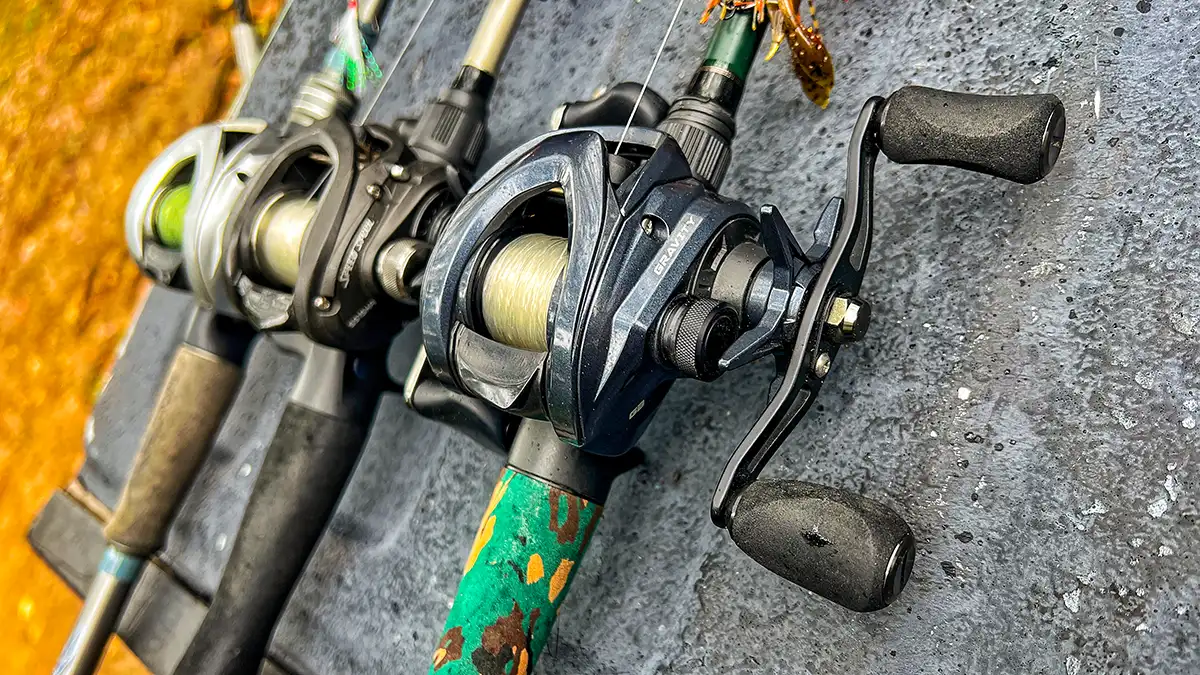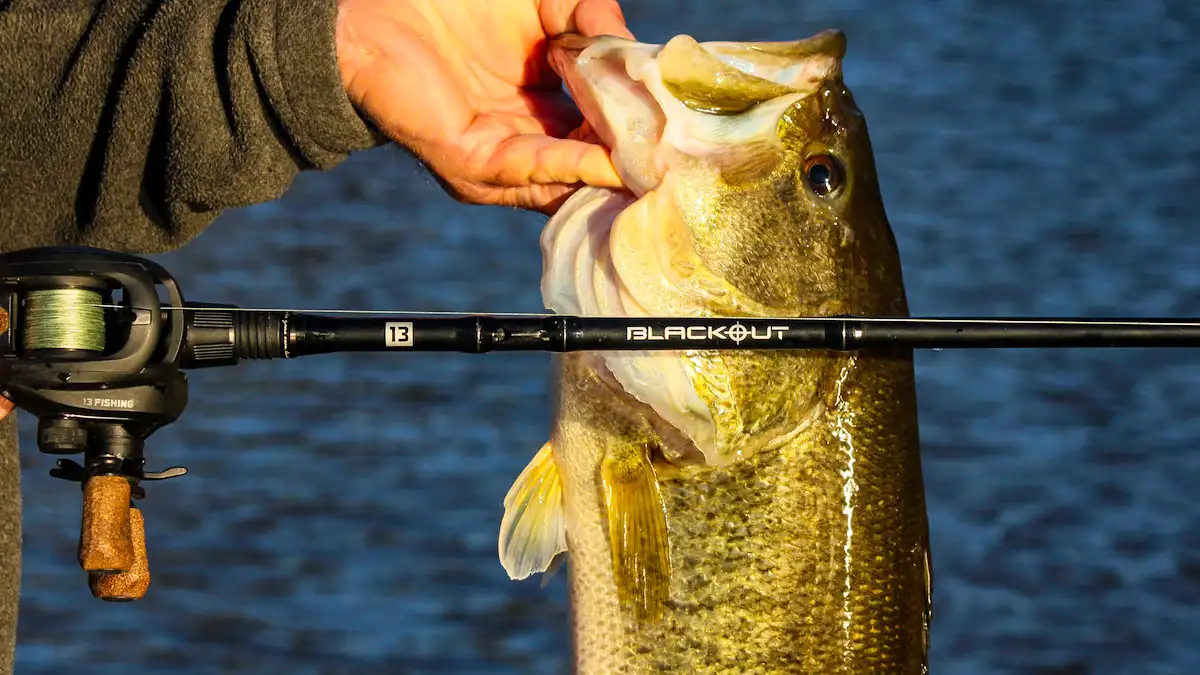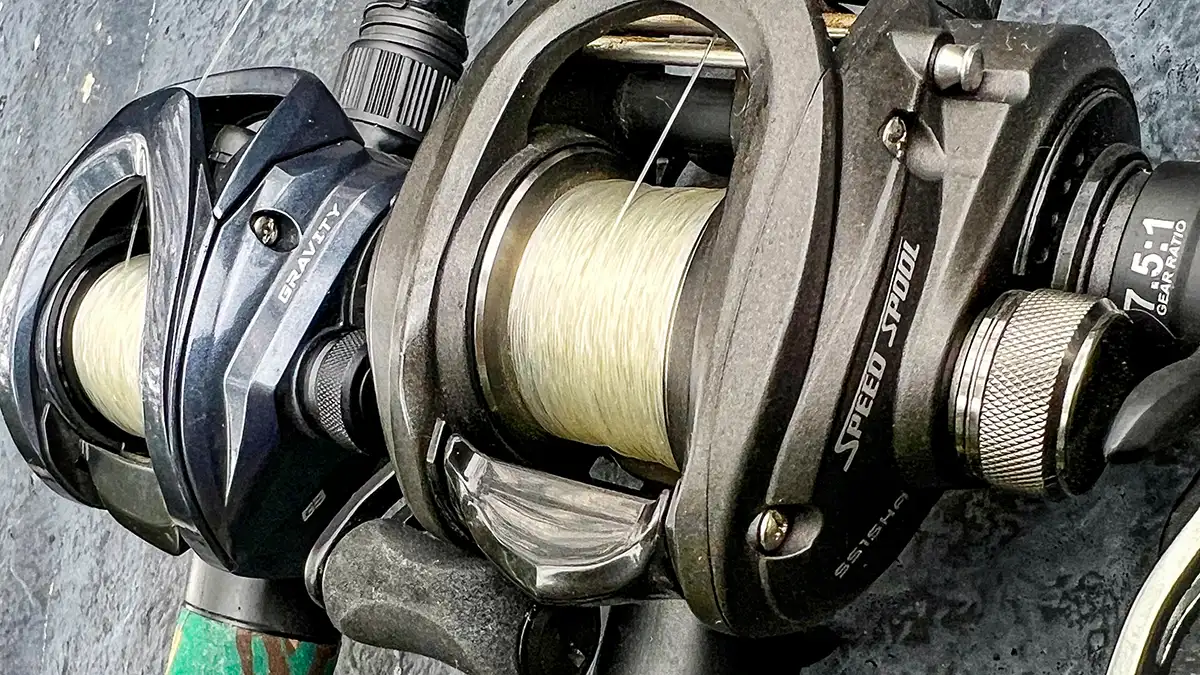When should you change your fishing line? As an angler, it’s important to figure out when to change your fishing line. If you don’t change it soon enough, your line could fail in a critical fight with a big fish or while bomb casting a high-dollar lure. If you get in the habit of changing it too early, however, you could cost yourself hundreds if not thousands of extra unnecessary dollars over time.
There’s an art to knowing when to change your line— and a bit of an art to the actual process of changing out old line for new. You can find some pointers here on how to spool line on a fishing reel. As for knowing when to do this, it depends based on the type of line.
There are three main types of fishing line used for bass and many other sport fish: monofilament, fluorocarbon and braid. Inside that realm though there are dozens of manufacturers that make hundreds of individual products. So, offering up one blanket rule for when to change all types, brands and models of fishing line is an unrealistic task. But there are some early warning signs to look for with each type.
WHEN TO CHANGE MONOFILAMENT
Monofilament line is the cheapest of these three line types typically. It also holds up for quite a while, about as long as fluoro but not nearly as long as braid. When mono is new, it is pretty soft. It does have a lot of memory, meaning that the line naturally tries to maintain the shape of the spool it comes off of. But it’s also soft and stretchy. When mono becomes dry and loses that innate stretchiness, it’s time to change it out.
You should also constantly be on the lookout for abrasions with monofilament. Basically look for rough spots where the line begins to fray. Cover typically causes these abrasions so they are close the lure. In these instances, there’s no need to change out the entire spool of line. Instead just cut the last few feet of effected line off and retie. But there are some situations where one of these abrasions will occur much further up the line.
If you have to cut off dozens of feet of line to remove the damaged section, you’ll have much less line on your reel. This will greatly decrease your casting distance. If this is bad enough, you’ll need to go ahead and re-spool the whole reel. And since mono is pretty cheap, it’s always better to be safe than sorry with this line type. If you suspect the strength and integrity of your monofilament line, trust your instincts and go ahead and swap it out.
SWAPPING OUT FLOUROCARBON
You should always be on the lookout for abrasions with fluorocarbon as well. Again, this will often occur close to the bait, as the cover you’re fishing around rubs the line and damages it’s integrity. The frays and abrasion will typically be easy to identify with your eyes, but you can also run the line between your fingertip and thumb and be able to feel the rough spot. Again, simply retying is usually sufficient here.
But if you make a bad cast, end up with a severe backlash and your line cinches down into your reel, this can cause an abrasion or weak spot in your line as well. Sometimes this damage won’t be identifiable by touch though, and you’ll instead have to look for a discoloration in the line. Fluorocarbon is transparent, nearly disappearing in the water. If you notice a section of the line that looks a little milky or white, this is an indicator of a weak spot.
If you’re suspicious that this may be the case, put that section of line in the water, and the discoloration will be even easier to see. In the event that you have one of these bad spots pretty far up your line (say somewhere in the middle of the section of line you’re casting out each time), you may need to re-spool. First though, try cutting just that section off and retying, as fluorocarbon can be expensive to re-spool. Try fishing for a while with this lesser amount of line on your reel. If it’s not possible to effectively cast though, go ahead and re-spool.
CHANGING BRAIDED FISHING LINE
Braided line lasts a very long time, which can actually give you a false sense of security if you’re not careful. Some people errantly think that you never have to change braid out, especially if it’s on a rod like a flipping stick that rarely sees much use. Others sometimes change braid out too quickly, as soon as it starts to fade for example. However, the integrity of braided line lasts a lot longer than the dye that’s used to color it.
You’ll see some of the same abrasions and frays down close to your baits. These small sections of line can almost always be cutout and the bait retied without needing to re-spool the whole reel. However, you can get a fray like this deep down in your reel, especially if you use a line pick to pick out a backlash for example.
The small point or hook on a line pick can split the fibers of the braid and damage the strength of the line if you’re not careful. You may also have a knot cinch down way up your braided line and it be impossible to get out, even causing your line to break in the process of trying to pull or pick it loose.
A good indicator that your line is getting old comes when the line in general starts to look a little fuzzy. It won’t so much be a noticeable fray in an isolated spot in the line, but instead the larger portion of the line that’s used on each cast will become fuzzy, as the fibers start to loosen up a bit. This is when you should change your braided line for sure.
FINAL THOUGHTS ON LINE CHANGE
To keep things pretty simple as we talk about when to change your line, look for things that are out of the norm. This can mean something as noticeable and isolated as a fray, knot or abrasion. Or it can be more widespread like the general fuzziness of braid after a while, the dryness of monofilament or the discoloration of fluorocarbon.
Basically, if you start seeing things happen to your line that weren’t present when you first pulled it from its packaging, it’s worth at least considering swapping it out. Try not to jump the gun with the more expensive lines like fluoro and braid, but it’s certainly okay to play it safe with the cheaper monofilament ones. And pay special attention to the last section of line closest to your bait. If you do all of this, you’ll develop a feel for things overtime and better know exactly when to change your fishing line.
















